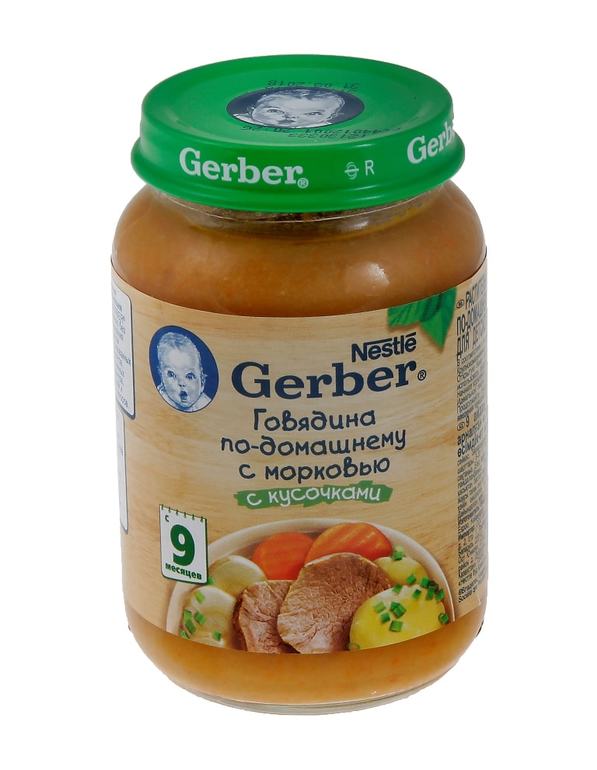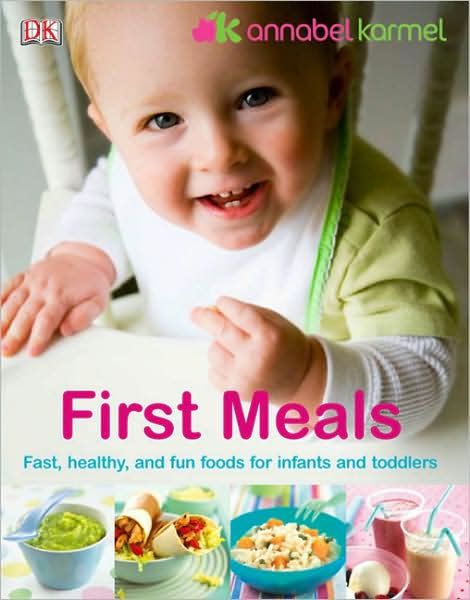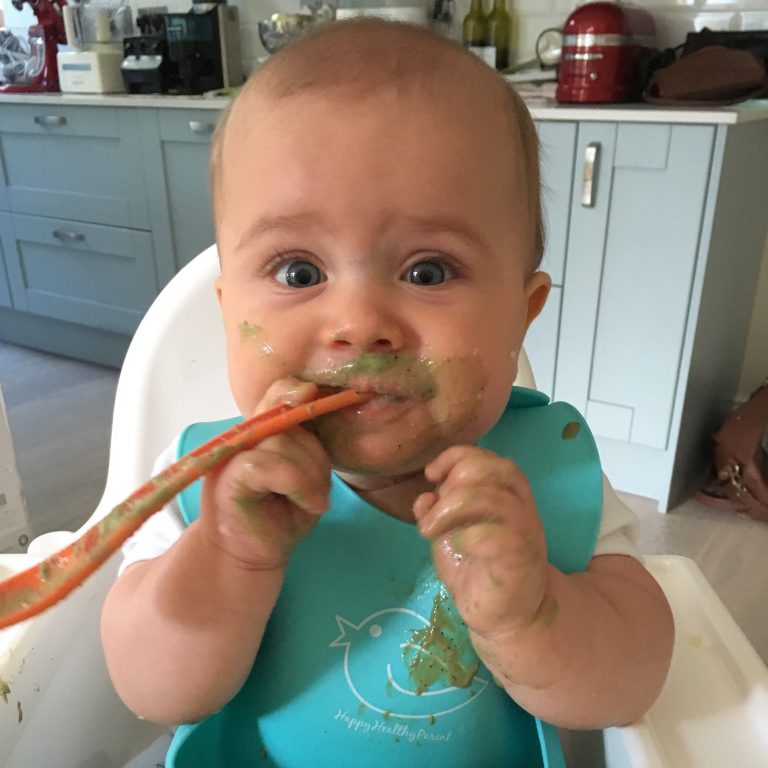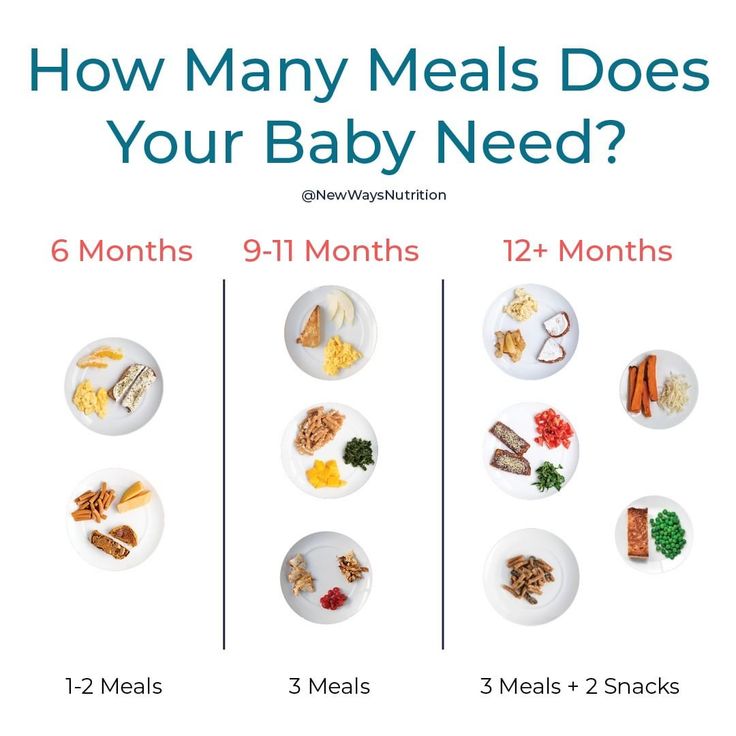What to feed baby koi fry
Raising Koi Fry: The Basics done Right
The koi fish is an extremely popular ornamental variety of carp. Koi are prized for their colors, which can be found in a wide range of shades and patterns, as well as the large size they attain when mature.
Because of this koi breeding is very popular among hobbyists as well as experts.
Prices range from relatively cheap to really expensive – depending on the bloodline and color patterns.
Today we are going to talk about how you can do this yourself on a very small budget and you may even breed the next Koi Champion winner!!
Stage 1: Spawning Koi Fish
Spawning is where all of the work begins when raising baby koi. The first thing you will notice is the males will frantically chase the females around your pond.
Now is the time to either move these breeding fish to a dedicated spawning tank.
Make sure you have plenty of room in whatever tank or holding area you choose as the fish need room to swim about and breed and add air stones to keep the water oxygenated.
The other option is to add spawning mops to your koi pond. These are called mops because they are made of multiple strands of fine nylon or synthetic material – similar to a mop.
Once the fish spawn the eggs will stick to anything they touch, and by adding a dedicated spawning mop you have the option to remove the eggs from the main pond before the other fish eat them all.
Once your koi fish spawn it’s time to remove the mops or mats from the main pond and put them into your fry tank or leave them in your spawning talk if you removed the breeding adults from your main koi pond to spawn.
This is a great spawning brush
This doesn’t have to be anything special but use the same pond water as your main pond, maintaining the same temperature initially, and add some filtration and airstones.
Filtration is not really needed for the first few days because the current will potentially harm your baby fish.
Hatching Koi Fry
Within the first few days of hatching, your koi will be at their absolute most vulnerable. It is recommended you purchase an item known as a “spawn mop” or “spawn brush” to give the newborn koi fry a place to hold onto until they can begin to move about on their own.
It is recommended you purchase an item known as a “spawn mop” or “spawn brush” to give the newborn koi fry a place to hold onto until they can begin to move about on their own.
If you are serious about trying to breed koi you will already have these.
Once you move the mops to the new tank it’s time to start the waiting game.
Koi eggs about 5 days to hatch – depending on water temperature. Water temps can slow this process down but make sure that when you move the mops the temp is the same in your holding tank.
For the first day or two, baby koi pretty much look after themselves. They feed off their yolk sac but once this source of nutrition has depleted they are going to be looking for food. At this stage, they will have grown to about 7mm in size.
The koi fry starts to feed on infusoria in the water (microscopic creatures). and will do this for a couple of days. From this point on you can start feeding your baby koi.
What to feed Koi Fry
Once the koi fry starts to swim about freely you can start to introduce food to the tank. Brine shrimp are the best food for babies and the koi fry will gobble them up in the thousands.
Brine shrimp are the best food for babies and the koi fry will gobble them up in the thousands.
Brine Shrimp for koi babies
Raising koi fry can be challenging if you are not prepared. If you go down the road of feeding the koi fry brine shrimp then you might be better off investing in a purpose-built hatchery.
They are relatively inexpensive and if you are serious about breeding koi it’s a great investment.
It’s like liquid food because you spoon it from your hatchery into the separate tank a few days after the eggs hatch.
Daphnia or ground-up fish flakes to make a fry powder are perfect food for baby koi fry. You can also grind up koi pellets and mix them with some fish flakes to create a tasty food source.
The fry will start to look a bit more like fish at this point and will be swimming about in the water properly.
Best Koi Fry Food
There are plenty of options available if you want to purchase fry food and here is a selection of the more popular shop brands on the market.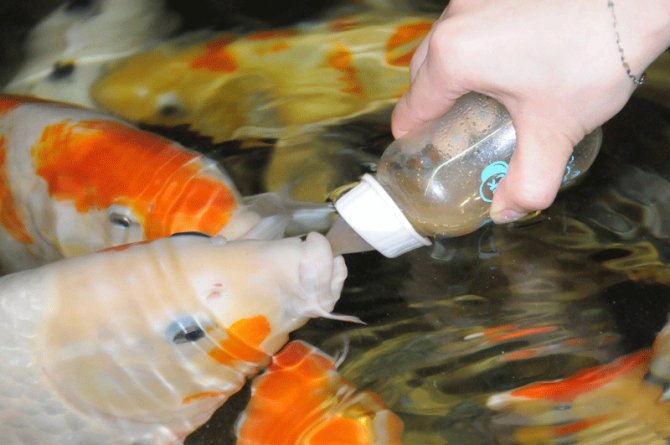
How much should I feed my koi fry?
Only feed enough that can be eaten within a few mins. When the koi fry are very young they only eat tiny particles of food. As they grow the amount of food should grow too.
Baby Koi everywhere
After another few days, you can start to see the eggs and fry that didn’t make it. The egg yolk will go a dull grey color and a number may start to grown a mold around them. This is common enough and an adult Koi can lay 1000’s of eggs.
A rough calculation of the surface area of your holding pond will tell you how many koi you can realistically manage and give the best chances to the stronger fish.
The sooner you can remove these dead koi eggs the better as you need to try to maintain water quality as best you can from the start.
Culling of deformed and sick baby koi is a must, and while off-putting to many if you go to the effort early enough it will help the survival of the overall batch. Some koi fish will be born with malformed fins and other babies will just not make it.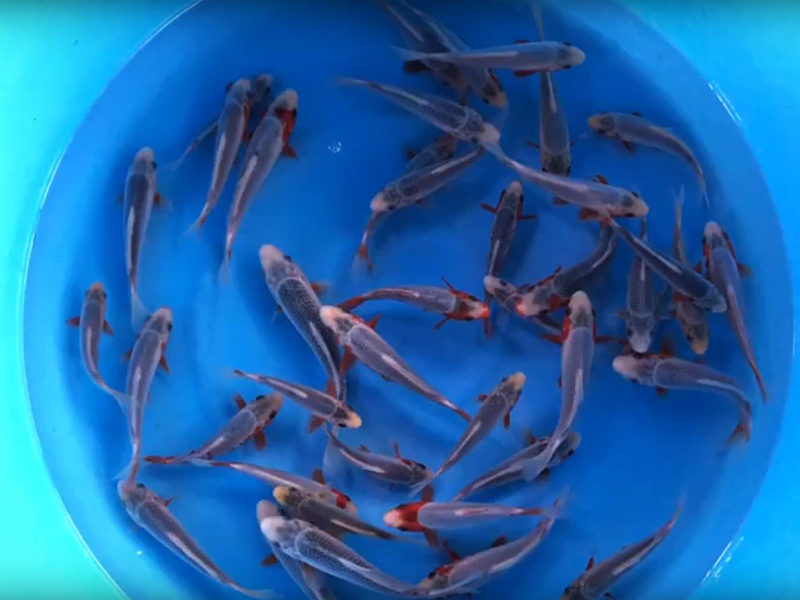
It is important to cull these fish as soon as they are born in order to keep the koi population within a manageable number.
If you don’t, it won’t be long before your holding area becomes overcrowded and all of the juveniles will die from lack of oxygen.
This is just the first stage in the culling process and you will need to do this again at about the 4-week mark. You need to select the strongest fish in the batch and ones that are starting to show interesting colors.
This is one of the challenges of raising koi fry and in our experience, you get the best results by culling fish without a decent pattern or stunted growth. This approach means only the best koi with the strongest growth end up in your pond.
How long do koi fry stay in the tank?
Realistically you are going to want to keep your fry in a separate location to the main pond for at least 4 months. If you add them any sooner they will possibly become food for your bigger fish.
It is at this point that you again need to sort out which fish to keep. Because the fish are stronger now and will have some interesting colors you can batch them up and give them to other pond enthusiasts or friends instead of culling them.
Because the fish are stronger now and will have some interesting colors you can batch them up and give them to other pond enthusiasts or friends instead of culling them.
Whatever you do, make sure to not dump any fish into natural waterways as there are hefty fines for doing so – They are considered an invasive species and will harm the natural pattern of rivers and lakes if introduced.
You really only want to keep the best fish for your pond and get rid of the rest. Baby koi – like all koi fish grow into big adult fish over time so make sure your pond can accommodate the additional fish before you add them.
Moving your baby koi to the main pond
Now that the fry has grown in size you can start to think about moving them to the main pond. Treat this the same way you do when you add any new fish to your pond.
They should be bagged up with plenty of water and oxygen in the bag and placed on the surface of your pond to acclimatize. Give it about an hour and then you can release the fish into the pond.
Keep an eye on them for a few days until they settle down. You may notice that the newly introduced fish will shay away from the bigger koi fish in the pond. This is common enough so when feeding try and feed your main fish off to one side and then track back to the hideout of your smaller fish and give them some food as well – but make sure it’s the right size.
Huge koi in a 5000-gallon pond have very different eating habits to smaller types of koi fish so either use a different food or break up the pellets to suit.
Also, remember to keep an eye on your water parameters after you introduce the new fish. They will add to the overall load on the filtration system so frequent checks are necessary until everything settles down.
If you want to see Koi spawning in a pond then check out this great video. They go through everything from the initial showing of breeding to feeding the fry. Well worth checking out.
After everything settles down in your main pond you need to keep an eye on your water parameters.
The additional fish load will have an impact on water quality as the fish grow so make sure you have a pond filter that can cope with this additional load.
Why not take a look at our DIY Koi Pond Filter and see if this could work on your pond.
A Guide To Raising Koi Fry
A Guide to Raising Koi Fry
So, if you are reading this, chances are you have successfully bred your koi and have some fry ready to go or are planning to breed them sometime soon.
Either way, you have come to the right place!
Let’s look at how to go about raising koi fry!
Koi Fish by Giovanni Carlo (https://www.giobelkoicenter.com/)
The First Days for Koi Fry
Raising koi fry does not have to be a scary experience.
What sounds terrifying and delicate at first glance is actually a relatively easy project to undertake if you are prepared and understand the lifecycle of a koi fish.
Within the first few days of hatching, your koi will be at their absolute most vulnerable.
It is recommended you purchase an item known as a “spawn mop” or “spawn brush” to give the newborn koi fry a place to hold onto until they can begin to move about on their own.
These can be picked up at most fish product retailers or through Amazon.
Some of our favorites include:
Penn Plax Fish Breeding Grass
Check Price on Amazon
This product is a large piece of faux grass that works to mimic the natural appearance of a koi fish’s breeding ground.
The grass can either float at the water’s surface or be weighed down to allow a lower holding zone for the fry.
This is a safe area for the babies to hide and can be washed and reused many times over thanks to its durable, reinforced nature!
Deelicious Trading Koi Fish Breeder Fry Net
Check Price on Amazon
A bit of a different take than the Penn Plax product, this is a rope-like faux plant that allows the koi fry to drift in the water on thick tendrils.
The brand claims it to be fish safe, reusable, and very durable, as well.
You should ideally have this already in your fry’s holding tank while they are still eggs so that when they are born they can readily attach to the nets. The average wait for koi eggs to hatch is around four days after being laid, though the breeding process can take quite some time. Once you notice eggs, immediately remove the parent fish and add in the fry net of your choice.
For the first two to three days of their life, the fry will feed off of their yolk sac. You do not need to feed them during this period, as they cannot even eat yet. Very young fry actually lack mouths!
When Koi Fry Start to Swim On Their Own
Once your koi begin to move around a bit on their own, they are probably ready to eat. This usually occurs around the tenth day, but can take longer or occur sooner depending on your water temperature (more on that in a bit).
Start off with either a liquid food made of brine shrimp or daphnia or a fry powder made from crushing up regular koi food with a mortar and pestle.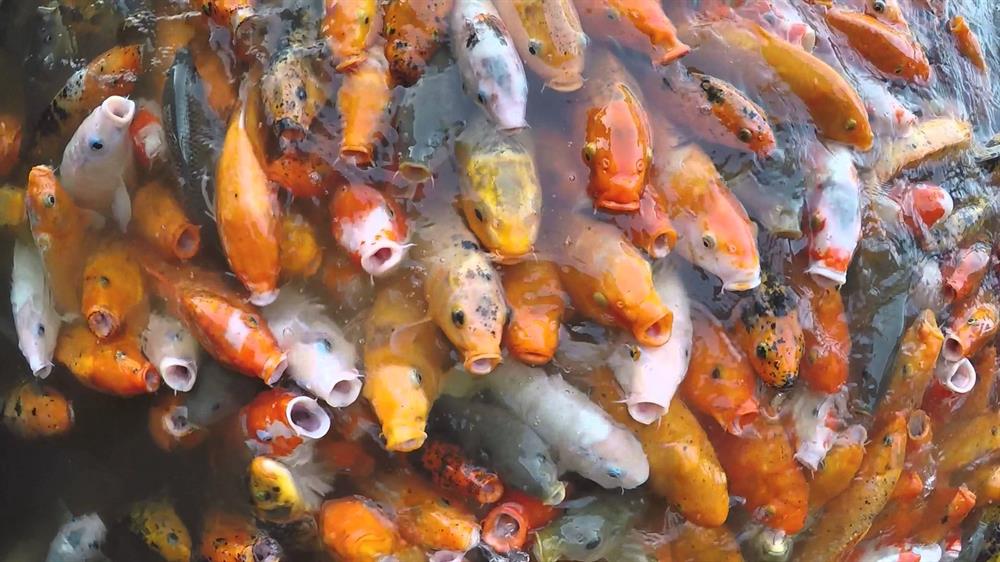 Do not feed more than what can be consumed within 5 minutes to prevent polluting the water.
Do not feed more than what can be consumed within 5 minutes to prevent polluting the water.
As they grow, make the food source larger to grow their stomach size. Be sure the food is not so large that they will be injured or have digestive issues.
During this time, it is very important that you keep the water aerated. The koi are still too small for any sort of actual filter so try adding in air stones or other gentle aeration tools that will not blow them around but will provide plenty of oxygen. You also must maintain a temperature close to that of your pond and generally keep the eggs a bit warmer, even, if you want a successful hatch within the four-day window.
As they grow, make the food source larger to grow their stomach size. Be sure the food is not so large that they will be injured or have digestive issues.
Reducing Your Baby Koi Numbers
While you may get attached to all of your cute new baby koi, it is sadly not realistic to keep all of them. Once your koi are around one inch or a bit more, you probably need to cull some of the less healthy fish or those that are not interestingly patterned or otherwise “valued” (not that all koi aren’t valuable in their own right, more so keep ones that are vibrant). This means humanely dispatching or giving away koi fry that aren’t ones you wish to keep and raise.
Once your koi are around one inch or a bit more, you probably need to cull some of the less healthy fish or those that are not interestingly patterned or otherwise “valued” (not that all koi aren’t valuable in their own right, more so keep ones that are vibrant). This means humanely dispatching or giving away koi fry that aren’t ones you wish to keep and raise.
This is a hard process but is one of the realities of raising koi fy. Keeping an entire batch of fry leads to overcrowding, food competition, and the entire group suffering. A second culling needs to happen when they are around four weeks old and a third once they reach two months. By the end, you should only have around a quarter of what you started with, if that.
Introducing Koi Babies to A New Pond
Once your koi are around four to six months old, they will likely be large enough to put them into your main pond. To do this, first place them in bags with water from their holding tank and allow them to float on the surface of the pond and acclimate to the water. Release them into the pond after an hour or so of acclimation and monitor them to ensure they are doing well.
Release them into the pond after an hour or so of acclimation and monitor them to ensure they are doing well.
If you release them too soon, they may become food for the other koi or be injured. Try to let them get reasonably large and close to size with your smaller adult fish to ensure they thrive in their new enclosure.
Raising Koi Fry is Rewarding
Raising koi fry is a rewarding task that can give you quite a few new fish for your pond. Though it may seem scary, with a bit of knowledge you can make the process a breeze!
Just take your time and always ensure your koi are safe and moving along nicely in their growth progression. Patience is key!
Koi carps (care, feeding, breeding, types, compatibility)
Koi carps are a "work" of Japanese ichthyologists-breeders. On the basis of ordinary carp, dozens of species of koi carp were bred, striking everyone with their unusual and bright coloring.
Such fish (koi) can be conditionally classified as aquarium fish, as their size can make them difficult to keep, at least in a home aquarium. Let's say more, such fish can be an ornament in any institution. For example, they can be seen in the pool of the hall, or in the artificial river of the zoo.
Let's say more, such fish can be an ornament in any institution. For example, they can be seen in the pool of the hall, or in the artificial river of the zoo.
In any case, koi carps will please you with their appearance and bring positive emotions into your life. Learn more about these fish below.
The history of the appearance of koi
The time of the appearance of koi in Japan is not known for certain. Some sources say that already 2500 years ago carps lived in the rivers and lakes of the Japanese islands, other sources claim that they were brought to Japan by Chinese conquerors in the 14th-15th centuries AD. One thing is clear, that carp often served as the only food of the peasants. Then they began to grow them artificially in rice paddies. Sometimes individuals with an unusual coloration grew up among carps. They were not eaten, but left for further reproduction. By crossing fish with different colors, even more interesting color combinations were obtained. The first colored koi show was held at 1914 year.
Koi varieties
There are a total of 80 koi carp species, divided into sixteen groups with certain similar characteristics. They are:
1. Utsurimono,
2. Showa Sanshoku,
3. Taisho Sanshoku,
4. Kohaku,
5. Tantyo,
6. Asagi,
7. Bekko,
8.90 Kawari Ogon, 90 10. Hikari-moyomono,
11. Koromo,
12. Kinginrin,
13. Shusui,
14. Goshiki,
15. Doitsu-goi,
16. Kumonryu.
According to Japanese canons, a fish that has passed 6 breeding selections can become a koi carp. As you can see, everything is very strict. In order for an ordinary fish to become a koi carp, the shape of the body, fins, their relationship to each other, the pattern and color of the spots, and such a speculative concept as the posture of the fish are evaluated. Carp live up to 30 years, reaching a length of 50 cm to 90 cm.
Keeping koi
Since koi fish are quite large, they are kept either in large aquariums, but more often in garden ponds. Moreover, it can be kept all year round, protecting the pond from snow and frost. Water parameters for keeping koi:
Moreover, it can be kept all year round, protecting the pond from snow and frost. Water parameters for keeping koi:
- water temperature from 15 to 30 degrees. Although they can tolerate temperatures from 2 to 35 degrees Celsius;
- acidity of water pH = 7 - 7.5;
- oxygen content 4-5 mg/l;
- water hardness 4-10 units.
Koi feeding
What rules should be followed when feeding carp:
- food should be eaten in 10-15 minutes;
- feed must not contaminate water;
- the portion of food should be small, it is better to underfeed than to overfeed;
- feed 2-3 times a day.
Carp fry are fed with infusoria, daphnia, wheat yeast, spirulina. Then they begin to include dry food in small fractions in the diet, the size of which increases with the growth of the fish.
Adult carps are omnivorous, so the diet can be varied - dry pellets, soaked bread, fruits, vegetables, boiled shrimp, live food without pathogens.
Very often natural and artificial foods contain dyes. It is necessary to ensure that there are not too many of them, otherwise it can lead to liver disease.
It is necessary to ensure that there are not too many of them, otherwise it can lead to liver disease.
Koi breeding
A spawning pond is used for breeding, where two or three males and one female are planted. After spawning, spawners can be returned to the main pond, since carp can eat not only eggs, but also fry.
After a few days, fry appear from the eggs. They have a special adhesive pad with which they stick to any surface and hang there. At this time, they do not need to be fed. As soon as the fry begin to swim, they begin to feed them.
Compatibility of koi with other fish
Since koi are very large fish, they are most often kept in aquariums or ponds alone, as they can eat small fish.
Koi varieties
Asagi. Scaled carp with a net pattern on a dark blue background.
Fins and belly usually red.
Bekko. White, red, yellow, with a black spotted pattern, which in no case should go over the head, otherwise it will be a different kind of koi.
Deutsu. Scaleless carp crossed with German carp, hence the name.
Kawarimono. This species includes all non-metallic koi.
Kinginrin. This word means "golden silver scales". The scales of these carps have a shimmering effect of gold or silver.
Koromo. The peculiarity of these carps is that a pattern of a different color is superimposed on a red pattern.
Kohaku. White koi with red pattern. One of the most famous koi breeds.
Fire. Single color carp. Often there are red, yellow, orange colors.
Tancho. This type of koi is named after Japan's national bird, the tancho crane. Like a bird, a carp has a red crown on its head.
Hikarimuji. Monochromatic koi with a metallic effect.
Seam. Carps with a red and white pattern on a black background.
I think the presented photos of koi carp will not let you doubt that such fish will decorate any place. It doesn't matter if it's a decent-sized aquarium or some other body of water.
It doesn't matter if it's a decent-sized aquarium or some other body of water.
What to feed Japanese carp, what food to choose for koi
Koi carp or Japanese carp is a fish of amazing beauty, which has a bright color, medium size and high resistance to external influences. In the Far East, these fish were launched into homestead fish ponds and their motley movements were observed. Today, koi are very popular in fish farms and master ponds. Koi food is of particular importance. Therefore, it is important to know what to feed them, since it is the balance of nutrients that allows the inhabitants of the lakes to have a bright and saturated color of the scales.
Feed types
Multi-colored carps are omnivorous, in their natural pond habitat they can perfectly eat both food of natural origin and dry food intended for a particular breed of fish. More often, the owners of Japanese carp prefer to save time and energy by choosing industrial feed for the inhabitants of the ponds. Purchased food has many varieties in terms of composition and nutritional value - this allows you to achieve various goals in the process of feeding both fry and adults.
Purchased food has many varieties in terms of composition and nutritional value - this allows you to achieve various goals in the process of feeding both fry and adults.
During the period of cold weather, it is required to select special formulations for cold water - their basis is vegetable protein. It is believed that the digestive system of fish copes better with amino acids of plant origin. Feed amino acids are obtained from wheat germ, as the most nutritious part of the cereal. Japanese carp food also contains some animal proteins.
These compositions are 40% composed of proteins - this is the most important component that provides all the vital functions and health of the fish. Winter food for koi carp is rich in vitamin E, which forms a mottled reddish color of the scales. The complex of mineral substances and unsaturated fatty acids increases the digestibility of granules. Probiotics allow to maintain the normal microflora of the digestive tract and maintain a high level of immune defense of the Japanese carp.
After wintering, koi carp is weakened, its immunity is reduced, the fish is prone to various diseases that affect not only the scales, but also the internal organs. Therefore, when the water temperature rises, colored fish can be fed with special mixtures and floating granules with a high content of probiotics. These component foods are high in polysaccharides, nutrients essential for the growth of intestinal bacteria.
A specific type of food helps to increase the barrier properties of the fish organism. This koi food has a low protein content (less than 30%), which allows it to be fed to fish with a formulation suitable for cold water feeding. It is necessary to mix such types of feed into the diet of lake inhabitants only after the environment has warmed up to 10 degrees.
After the water temperature in the reservoir reaches a value of 12 degrees, the stronger koi can be transferred to one of the basic feeds. These are universal products, in their composition the percentage of protein content is increased and the amount of fat is reduced (no more than 3%).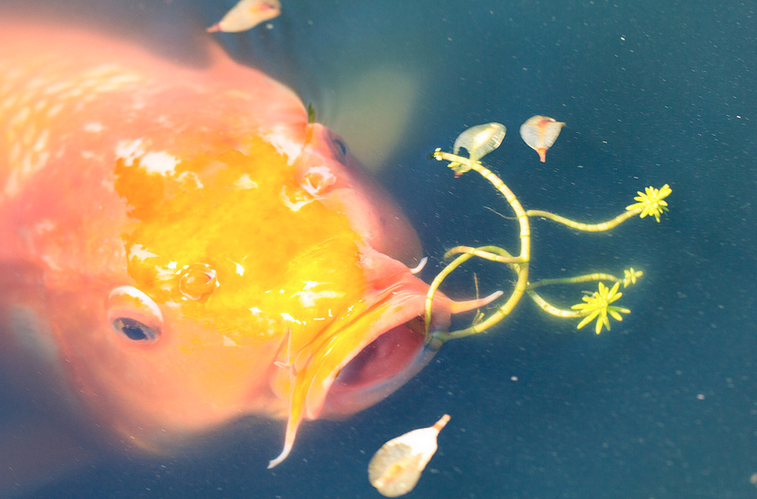 The use of lipid-reduced koi food is recommended until the water temperature rises to 15-20 degrees.
The use of lipid-reduced koi food is recommended until the water temperature rises to 15-20 degrees.
After the water has warmed up enough and the koi have adapted to the changed conditions, it is necessary to introduce premium food into the diet of the fish for active growth. This product is characterized by a high content of amino acids and fats, which allows the inhabitants of the underwater world to actively grow and gain weight. It is possible to combine the basic food with special fortified formulations rich in tocopherol, which will help maintain the natural bright colors of pets.
As for specific products, the market is filled with different types of feeds that allow you to achieve the desired results, each manufacturer offers to buy dry food for all fish breeds. Consider the most popular companies that produce a quality product:
-
Coppens Koi. The manufacturer offers a whole series of products for this type of fish. The line includes positions for nutrition at low temperatures, with spirulina (to enhance color), for health promotion, basic nutrition, for the growth of young individuals, etc.
 A complete standard diet (for an ambient temperature of 15 degrees) ensures rapid growth, beautiful color, helps to avoid obesity, which is especially important for exhibition pets. In addition to protein, fats, fiber, ash, phosphorus and vitamins, the composition includes the probiotic inulin, which ensures healthy digestion of fish, as well as the carotenoid astaxanthin, which enhances the bright pigment of carp;
A complete standard diet (for an ambient temperature of 15 degrees) ensures rapid growth, beautiful color, helps to avoid obesity, which is especially important for exhibition pets. In addition to protein, fats, fiber, ash, phosphorus and vitamins, the composition includes the probiotic inulin, which ensures healthy digestion of fish, as well as the carotenoid astaxanthin, which enhances the bright pigment of carp; -
Yamato. The manufacturer offers food options for the autumn-winter period, for low temperatures, for the main food, for the rapid growth of young individuals. Belongs to the premium class, the composition of the standard mixture for carps includes proteins, fats, fiber, phosphates, calcium, vitamins A, D3, E, ascorbic acid;
-
TetraPond is a food in the form of sticks, flakes and pellets for koi of different sizes. In addition to the content of all useful components important for the inhabitant of the pond, the composition stimulates the strengthening of immunity and is easily absorbed in the digestive system, minimally polluting the water;
-
Tetra.
 The food is sold in packaging depending on the age of the fish: 150 grams for fry, 1 kg for pets up to 10 cm, 2.5 kg - the main food for adult fish from 10 cm and from 20 cm in the form of floating granules.
The food is sold in packaging depending on the age of the fish: 150 grams for fry, 1 kg for pets up to 10 cm, 2.5 kg - the main food for adult fish from 10 cm and from 20 cm in the form of floating granules.
How to prepare your own feed
As noted, the koi is an omnivorous fish that tolerates both animal and vegetable food well. For this reason, you can save money, and instead of purchasing expensive industrial feeds, prepare an equally high-quality mixture with your own hands. This method of feeding will be more environmentally friendly than the option with a purchased composition.
Almost everything that can be found in nature can become components for the preparation of complete homemade food. Koi are not picky eaters and are excellent eaters of the following organisms:
-
bloodworm;
-
tubifex;
-
daphnia;
-
coretra.
Earthworms are a good option for feeding every day. It must be remembered that before sending them to the “table”, the worms need to be kept in clean water for some time in order to cleanse their intestines.
It must be remembered that before sending them to the “table”, the worms need to be kept in clean water for some time in order to cleanse their intestines.
Japanese carp eats well cereals that need to be brewed in boiling water without adding salt. It can be buckwheat, millet or semolina. Rinse the boiled porridge well under water so that it becomes crumbly and excess gluten is gone. The paste does not come out of the intestines of the koi and clogs it, which can lead to the death of the fish.
Soft aquatic plants can be included in homemade food, for example:
-
duckweed;
-
riccia;
-
vallisneria;
-
wolfium;
-
hornwort, etc.
For harvesting feed, you can use almost any greens and vegetables that need to be scalded with boiling water, and then cut into small strips. Lettuce, parsley, dill, dandelions, plantain can be used as raw materials. Similarly, you can use zucchini, carrots, cucumbers and pumpkins - these products are rubbed on a fine grater, and then sent to feed the inhabitants of ornamental ponds.
Similarly, you can use zucchini, carrots, cucumbers and pumpkins - these products are rubbed on a fine grater, and then sent to feed the inhabitants of ornamental ponds.
How to properly feed pond fish
Koi carp, despite its high resistance to external conditions, requires special attention. This is especially true of the feeding process, in which it is necessary to take into account both the physiology of a particular breed and the general principles of feeding lake fish.
When feeding fish with dry food, it is important to take into account that granules, like flakes, swell in water. For this reason, portions dispensed should be small. Carps willingly eat everything they are given, and then the food in their stomach increases significantly. This can lead to increased gas formation, constipation, inflammation of the digestive organs, and even death of pets.
Before feeding, you need to put food in water so that it swells a little. For flakes, 10-15 seconds is enough, and for granules - 30 seconds. Only after that dry food is lowered into the pond. As for the frequency of feeding, it depends on a number of factors, such as water temperature and the age of the koi. There is a rule: the colder the water in the reservoir, the less food the fish need.
For flakes, 10-15 seconds is enough, and for granules - 30 seconds. Only after that dry food is lowered into the pond. As for the frequency of feeding, it depends on a number of factors, such as water temperature and the age of the koi. There is a rule: the colder the water in the reservoir, the less food the fish need.
Young fish are fed hourly, and the amount of food can be up to 10% of the body weight of each individual. More adult carps are treated 2-3 times a day, sending food to the reservoir in the amount of 3% of the weight of the fish in it. The rest of the feeding process and food volumes are adjusted to the individual needs of the pets. If after feeding the carps in the pond are still asking for food, then they can be given supplements, and if the pellets remain on the surface, then the feeding procedure should be completed.
There is an important rule: it is better to leave Japanese carps a little hungry than to overfeed them. Oversaturation with food leads not only to a deterioration in the well-being of pets, but also to a disruption in the performance of purification systems.








